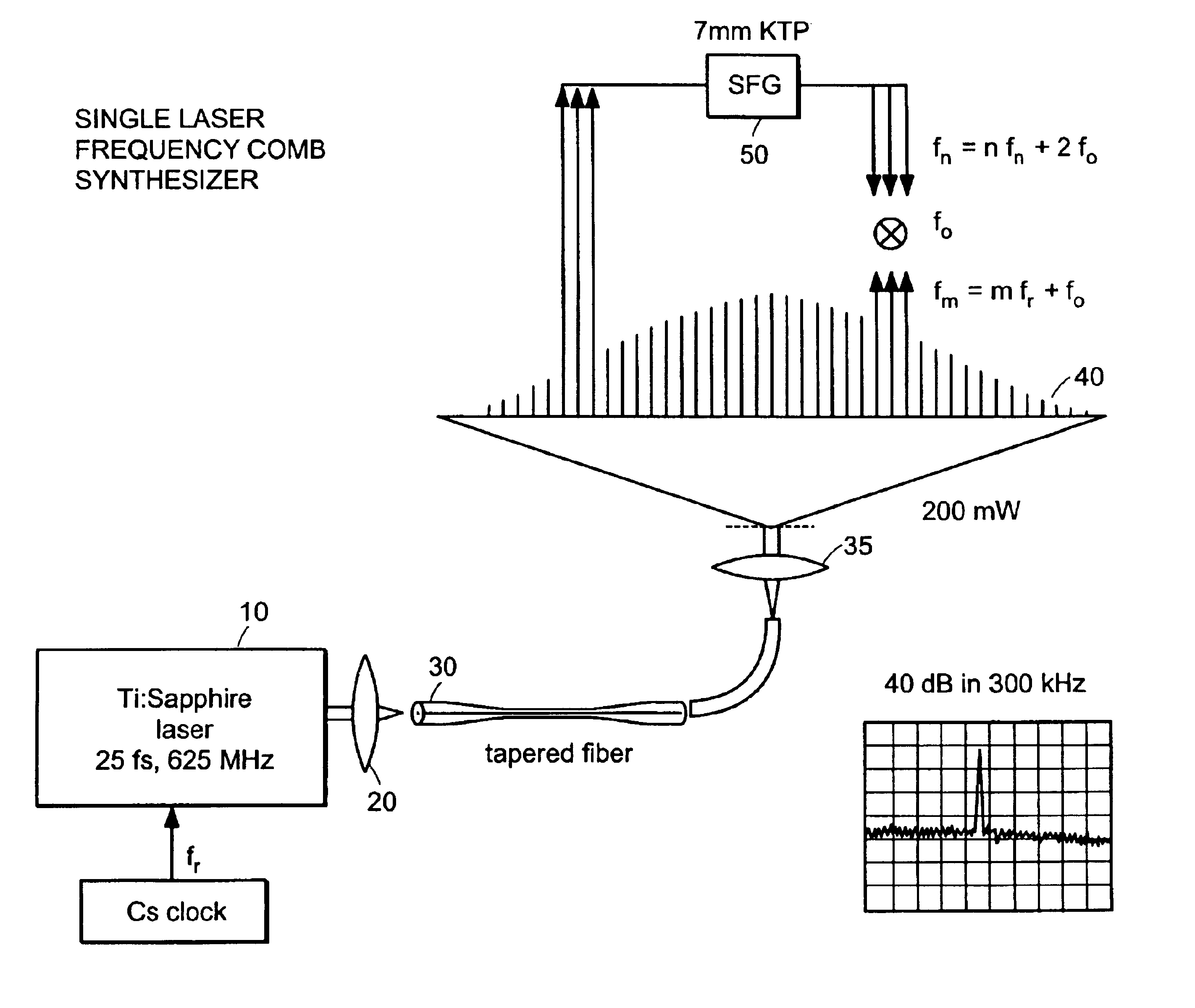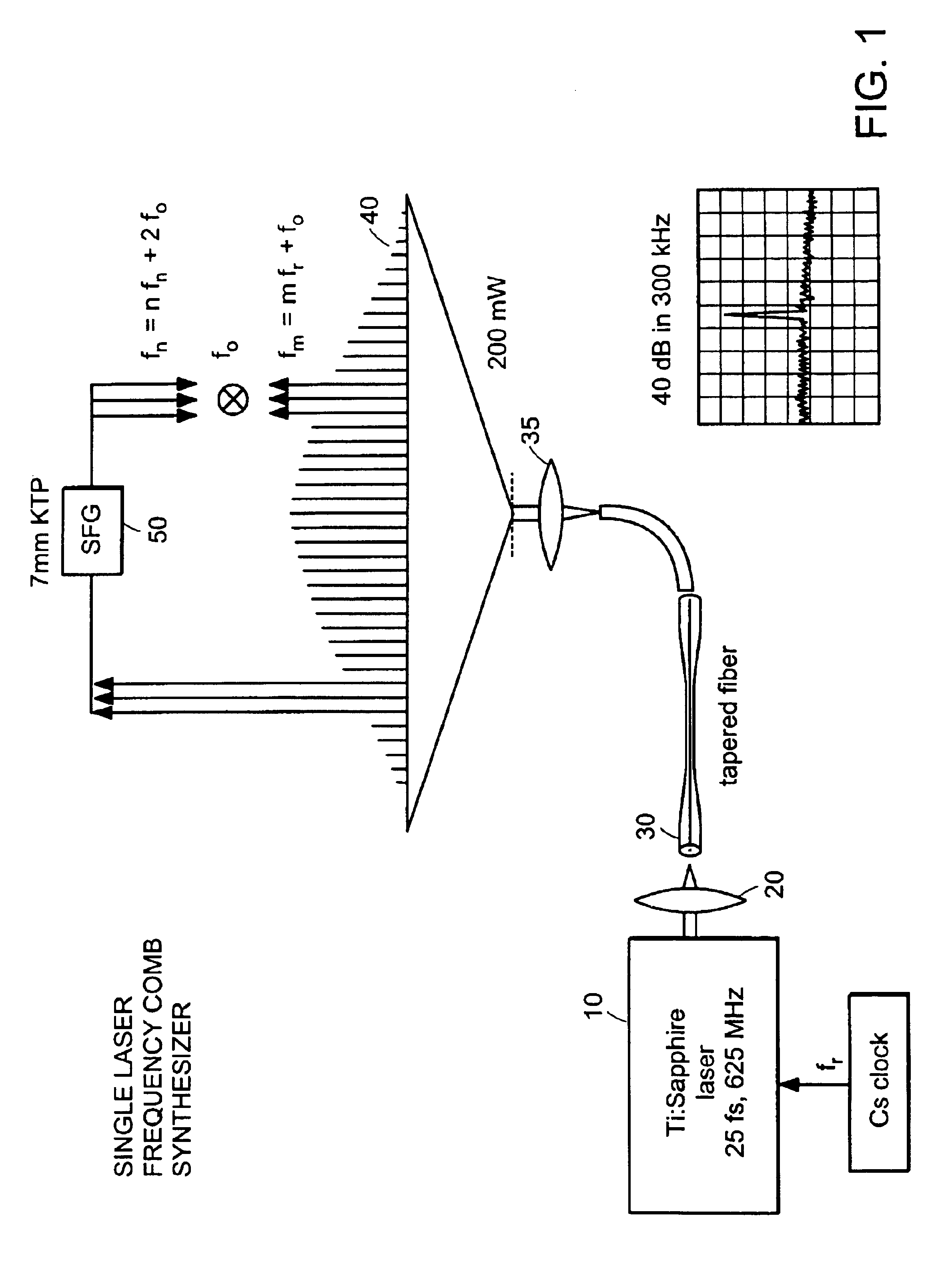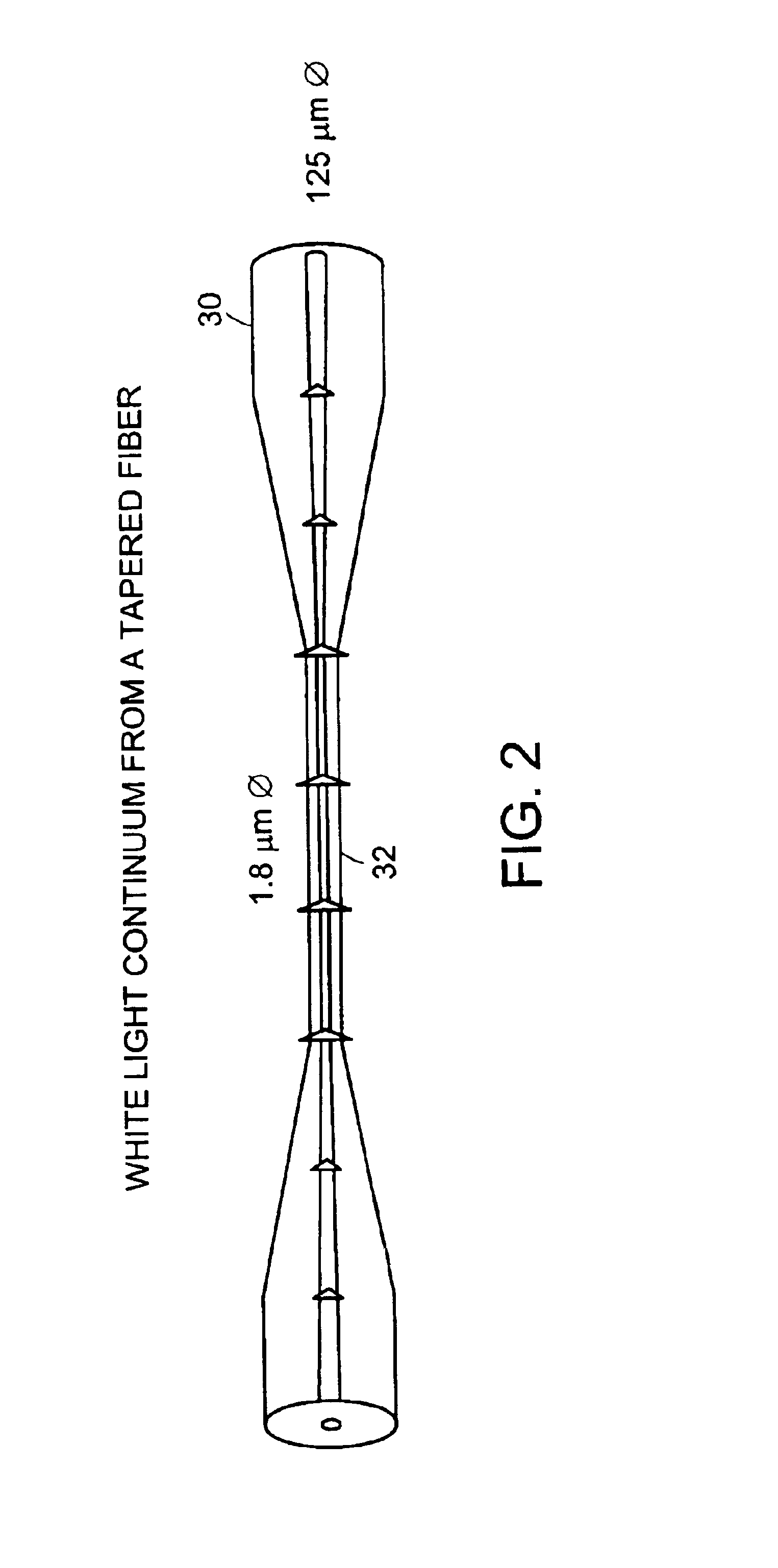Frequency comb analysis
a frequency comb and analysis technology, applied in the field of frequency comb analysis, can solve the problems of large transmission distance, limited application of optical frequency pulsing, and overlap of pulses over large transmission distances, and achieve the effect of increasing the specificity of detection
- Summary
- Abstract
- Description
- Claims
- Application Information
AI Technical Summary
Benefits of technology
Problems solved by technology
Method used
Image
Examples
example 1
Generation of a Frequency Comb
[0042]Referring to FIG. 1, a source 10, such as a Titanium (Ti): sapphire (Al2O3:Ti3+) laser, operated in pulsed mode, for example at a frequency of 625 MHz, with a pulse duration of 25femtoseconds (fs), provides illumination that is focused by a lens 20 into an optical path. The optical path can be an optical fiber 30, such as the tapered optical fiber shown in greater detail in FIG. 2, that has a constriction 32. In one embodiment, the tapered optical fiber 30 has an overall diameter of about 125 micrometers and a constriction 32 (or “waist”) having a diameter that is 1.8 micrometers in diameter. In some embodiments, the waist 32 is 1.5 micrometers in diameter. The interaction of the pulsed illumination with the constriction 32 creates a frequency comb 40 (“frequency comb illumination”). The frequency comb illumination exiting the tapered optical fiber 30 is focussed by a lens 35. In one embodiment, the frequency comb illumination contains optical rad...
example 2
Use of a Frequency Comb in Biologically Important Applications
[0046]As shown schematically in FIG. 3A, the frequency comb illumination may be focused onto substantially a point of light 65 that coincides with a point within a channel 60 through which a fluid 70 can flow, as indicated by the arrow 70. The channel is fabricated from a suitably transparent material. The channel 60 carries a fluid 70 comprising a chemical substance to be identified or that is intended to otherwise react with at least a portion of the frequency comb illumination. For example, a solution containing DNA may move down the channel 60 into the illuminated area. As will be discussed in more detail below, the DNA can be caused to move under the action of electric fields, or alternatively the DNA can be carried by a moving carrier fluid. As the frequency comb illumination passes through the channel 60, one or more frequency components of the frequency comb interact preferentially with the chemical substance, suc...
example 3
Use of a Frequency Comb in Optical Communication Applications
[0058]In the field of telecommunication, an exemplary frequency comb having a spacing of approximately 50 MHz and a one octave spectral bandwidth from approximately 600 nm to approximately 1200 m, which is equivalent to a bandwidth extending from 500×1012 per second or 500 TeraHertz (THz) to 250 THz, (i.e., 250 THz bandwidth), there would be approximately 5×106 or 5 million discrete monochromatic components in the frequency comb. At a frequency separation of 100 MHz, which is a common separation between adjacent channels in present-day telecommunication, the frequency comb would support approximately 2.5 million separate channels. A discussion of some of the features of optical communications appears in U.S. Pat. No. 5,631,758, the entire disclosure of which is incorporated herein by reference. Because the repetition rate can be controlled, as described above, the frequency spacing in the frequency comb can be controlled. ...
PUM
| Property | Measurement | Unit |
|---|---|---|
| frequency | aaaaa | aaaaa |
| frequency | aaaaa | aaaaa |
| diameter | aaaaa | aaaaa |
Abstract
Description
Claims
Application Information
 Login to View More
Login to View More - R&D
- Intellectual Property
- Life Sciences
- Materials
- Tech Scout
- Unparalleled Data Quality
- Higher Quality Content
- 60% Fewer Hallucinations
Browse by: Latest US Patents, China's latest patents, Technical Efficacy Thesaurus, Application Domain, Technology Topic, Popular Technical Reports.
© 2025 PatSnap. All rights reserved.Legal|Privacy policy|Modern Slavery Act Transparency Statement|Sitemap|About US| Contact US: help@patsnap.com



